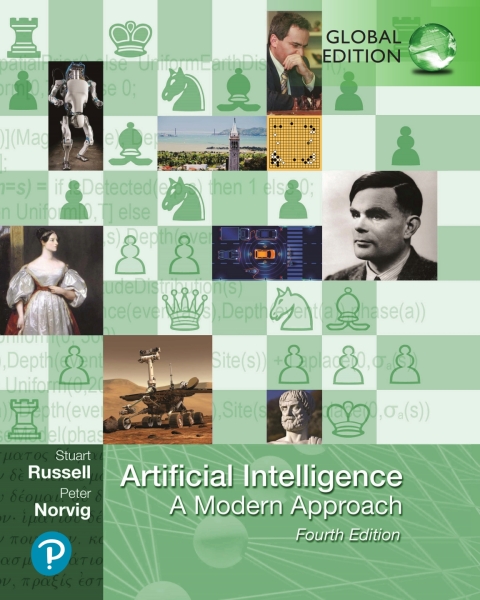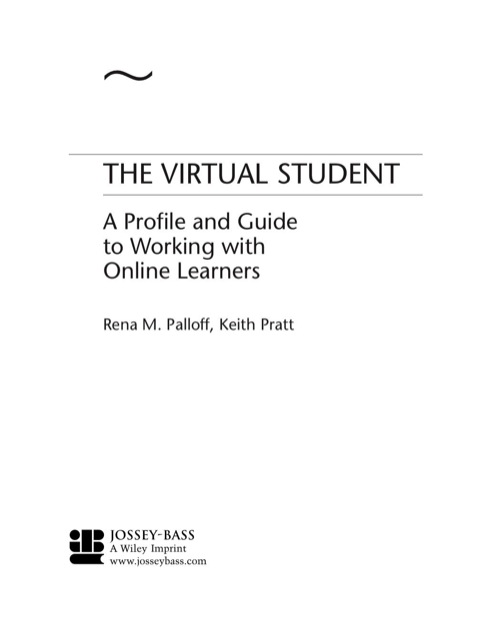Description
Efnisyfirlit
- Half Title
- AI Pearson Series in Artificial Intelligence
- Title Page
- Copyright
- Dedication
- Preface
- About the Authors
- Contents
- I: Artificial Intelligence
- Chapter 1: Introduction
- 1.1 What Is AI?
- 1.2 The Foundations of Artificial Intelligence
- 1.3 The History of Artificial Intelligence
- 1.4 The State of the Art
- 1.5 Risks and Benefits of AI
- Summary
- Bibliographical and Historical Notes
- Chapter 2: Intelligent Agents
- 2.1 Agents and Environments
- 2.2 Good Behavior: The Concept of Rationality
- 2.3 The Nature of Environments
- 2.4 The Structure of Agents
- Summary
- Bibliographical and Historical Notes
- II: Problem-solving
- Chapter 3: Solving Problems by Searching
- 3.1 Problem-Solving Agents
- 3.2 Example Problems
- 3.3 Search Algorithms
- 3.4 Uninformed Search Strategies
- 3.5 Informed (Heuristic) Search Strategies
- 3.6 Heuristic Functions
- Summary
- Bibliographical and Historical Notes
- Chapter 4: Search in Complex Environments
- 4.1 Local Search and Optimization Problems
- 4.2 Local Search in Continuous Spaces
- 4.3 Search with Nondeterministic Actions
- 4.4 Search in Partially Observable Environments
- 4.5 Online Search Agents and Unknown Environments
- Summary
- Bibliographical and Historical Notes
- Chapter 5: Constraint Satisfaction Problems
- 5.1 Defining Constraint Satisfaction Problems
- 5.2 Constraint Propagation: Inference in CSPs
- 5.3 Backtracking Search for CSPs
- 5.4 Local Search for CSPs
- 5.5 The Structure of Problems
- Summary
- Bibliographical and Historical Notes
- Chapter 6: Adversarial Search and Games
- 6.1 Game Theory
- 6.2 Optimal Decisions in Games
- 6.3 Heuristic Alpha–Beta Tree Search
- 6.4 Monte Carlo Tree Search
- 6.5 Stochastic Games
- 6.6 Partially Observable Games
- 6.7 Limitations of Game Search Algorithms
- Summary
- Bibliographical and Historical Notes
- III: Knowledge, reasoning, and planning
- Chapter 7: Logical Agents
- 7.1 Knowledge-Based Agents
- 7.2 The Wumpus World
- 7.3 Logic
- 7.4 Propositional Logic: A Very Simple Logic
- 7.5 Propositional Theorem Proving
- 7.6 Effective Propositional Model Checking
- 7.7 Agents Based on Propositional Logic
- Summary
- Bibliographical and Historical Notes
- Chapter 8: First-Order Logic
- 8.1 Representation Revisited
- 8.2 Syntax and Semantics of First-Order Logic
- 8.3 Using First-Order Logic
- 8.4 Knowledge Engineering in First-Order Logic
- Summary
- Bibliographical and Historical Notes
- Chapter 9: Inference in First-Order Logic
- 9.1 Propositional vs. First-Order Inference
- 9.2 Unification and First-Order Inference
- 9.3 Forward Chaining
- 9.4 Backward Chaining
- 9.5 Resolution
- Summary
- Bibliographical and Historical Notes
- Chapter 10: Knowledge Representation
- 10.1 Ontological Engineering
- 10.2 Categories and Objects
- 10.3 Events
- 10.4 Mental Objects and Modal Logic
- 10.5 Reasoning Systems for Categories
- 10.6 Reasoning with Default Information
- Summary
- Bibliographical and Historical Notes
- Chapter 11: Automated Planning
- 11.1 Definition of Classical Planning
- 11.2 Algorithms for Classical Planning
- 11.3 Heuristics for Planning
- 11.4 Hierarchical Planning
- 11.5 Planning and Acting in Nondeterministic Domains
- 11.6 Time, Schedules, and Resources
- 11.7 Analysis of Planning Approaches
- Summary
- Bibliographical and Historical Notes
- IV: Uncertain knowledge and reasoning
- Chapter 12: Quantifying Uncertainty
- 12.1 Acting under Uncertainty
- 12.2 Basic Probability Notation
- 12.3 Inference Using Full Joint Distributions
- 12.4 Independence
- 12.5 Bayes’ Rule and Its Use
- 12.6 Naive Bayes Models
- 12.7 The Wumpus World Revisited
- Summary
- Bibliographical and Historical Notes
- Chapter 13: Probabilistic Reasoning
- 13.1 Representing Knowledge in an Uncertain Domain
- 13.2 The Semantics of Bayesian Networks
- 13.3 Exact Inference in Bayesian Networks
- 13.4 Approximate Inference for Bayesian Networks
- 13.5 Causal Networks
- Summary
- Bibliographical and Historical Notes
- Chapter 14: Probabilistic Reasoning over Time
- 14.1 Time and Uncertainty
- 14.2 Inference in Temporal Models
- 14.3 Hidden Markov Models
- 14.4 Kalman Filters
- 14.5 Dynamic Bayesian Networks
- Summary
- Bibliographical and Historical Notes
- Chapter 15: Making Simple Decisions
- 15.1 Combining Beliefs and Desires under Uncertainty
- 15.2 The Basis of Utility Theory
- 15.3 Utility Functions
- 15.4 Multiattribute Utility Functions
- 15.5 Decision Networks
- 15.6 The Value of Information
- 15.7 Unknown Preferences
- Summary
- Bibliographical and Historical Notes
- Chapter 16: Making Complex Decisions
- 16.1 Sequential Decision Problems
- 16.2 Algorithms for MDPs
- 16.3 Bandit Problems
- 16.4 Partially Observable MDPs
- 16.5 Algorithms for Solving POMDPs
- Summary
- Bibliographical and Historical Notes
- Chapter 17: Multiagent Decision Making
- 17.1 Properties of Multiagent Environments
- 17.2 Non-Cooperative Game Theory
- 17.3 Cooperative Game Theory
- 17.4 Making Collective Decisions
- Summary
- Bibliographical and Historical Notes
- Chapter 18: Probabilistic Programming
- 18.1 Relational Probability Models
- 18.2 Open-Universe Probability Models
- 18.3 Keeping Track of a Complex World
- 18.4 Programs as Probability Models
- Summary
- Bibliographical and Historical Notes
- V: Machine Learning
- Chapter 19: Learning from Examples
- 19.1 Forms of Learning
- 19.2 Supervised Learning
- 19.3 Learning Decision Trees
- 19.4 Model Selection and Optimization
- 19.5 The Theory of Learning
- 19.6 Linear Regression and Classification
- 19.7 Nonparametric Models
- 19.8 Ensemble Learning
- 19.9 Developing Machine Learning Systems
- Summary
- Bibliographical and Historical Notes
- Chapter 20: Knowledge in Learning
- 20.1 A Logical Formulation of Learning
- 20.2 Knowledge in Learning
- 20.3 Explanation-Based Learning
- 20.4 Learning Using Relevance Information
- 20.5 Inductive Logic Programming
- Summary
- Bibliographical and Historical Notes
- Chapter 21: Learning Probabilistic Models
- 21.1 Statistical Learning
- 21.2 Learning with Complete Data
- 21.3 Learning with Hidden Variables: The EM Algorithm
- Summary
- Bibliographical and Historical Notes
- Chapter 22: Deep Learning
- 22.1 Simple Feedforward Networks
- 22.2 Computation Graphs for Deep Learning
- 22.3 Convolutional Networks
- 22.4 Learning Algorithms
- 22.5 Generalization
- 22.6 Recurrent Neural Networks
- 22.7 Unsupervised Learning and Transfer Learning
- 22.8 Applications
- Summary
- Bibliographical and Historical Notes
- Chapter 23: Reinforcement Learning
- 23.1 Learning from Rewards
- 23.2 Passive Reinforcement Learning
- 23.3 Active Reinforcement Learning
- 23.4 Generalization in Reinforcement Learning
- 23.5 Policy Search
- 23.6 Apprenticeship and Inverse Reinforcement Learning
- 23.7 Applications of Reinforcement Learning
- Summary
- Bibliographical and Historical Notes
- VI: Communicating, perceiving, and acting
- Chapter 24: Natural Language Processing
- 24.1 Language Models
- 24.2 Grammar
- 24.3 Parsing
- 24.4 Augmented Grammars
- 24.5 Complications of Real Natural Language
- 24.6 Natural Language Tasks
- Summary
- Bibliographical and Historical Notes
- Chapter 25: Deep Learning for Natural Language Processing
- 25.1 Word Embeddings
- 25.2 Recurrent Neural Networks for NLP
- 25.3 Sequence-to-Sequence Models
- 25.4 The Transformer Architecture
- 25.5 Pretraining and Transfer Learning
- 25.6 State of the art
- Summary
- Bibliographical and Historical Notes
- Chapter 26: Robotics
- 26.1 Robots
- 26.2 Robot Hardware
- 26.3 What kind of problem is robotics solving?
- 26.4 Robotic Perception
- 26.5 Planning and Control
- 26.6 Planning Uncertain Movements
- 26.7 Reinforcement Learning in Robotics
- 26.8 Humans and Robots
- 26.9 Alternative Robotic Frameworks
- 26.10 Application Domains
- Summary
- Bibliographical and Historical Notes
- Chapter 27: Computer Vision
- 27.1 Introduction
- 27.2 Image Formation
- 27.3 Simple Image Features
- 27.4 Classifying Images
- 27.5 Detecting Objects
- 27.6 The 3D World
- 27.7 Using Computer Vision
- Summary
- Bibliographical and Historical Notes
- VII: Conclusions
- Chapter 28: Philosophy, Ethics, and Safety of AI
- 28.1 The Limits of AI
- 28.2 Can Machines Really Think?
- 28.3 The Ethics of AI
- Summary
- Bibliographical and Historical Notes
- Chapter 29: The Future of AI
- 29.1 AI Components
- 29.2 AI Architectures
- Appendixes
- Appendix A: Mathematical Background
- A.1 Complexity Analysis and O() Notation
- A.2 Vectors, Matrices, and Linear Algebra
- A.3 Probability Distributions
- Bibliographical and Historical Notes
- Appendix B: Notes on Languages and Algorithms
- B.1 Defining Languages with Backus–Naur Form (BNF)
- B.2 Describing Algorithms with Pseudocode
- B.3 Online Supplemental Material
- Bibliography
- Index
- Symbols
- A
- B
- C
- D
- E
- F
- G
- H
- I
- J
- K
- L
- M
- N
- O
- P
- Q
- R
- S
- T
- U
- V
- W
- X
- Y
- Z







Reviews
There are no reviews yet.